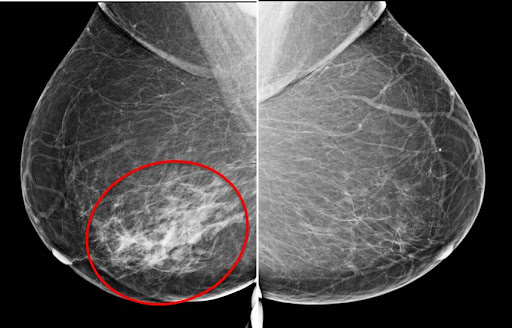Invasive breast cancer is a serious health condition that affects millions of women globally. It is distinct from the non-invasive forms in the fact that it invades and goes beyond the initial area of origin in the milk lobules or ducts to invade surrounding breast tissue. It can continue, with time, to metastasize into lymph nodes and other parts of the body.
What is Invasive Breast Cancer?
Invasive Breast Cancer allows cancer to easily spread to the lymph system or blood, and therefore, metastasis is likely. It is the most common form of breast cancer and accounts for approximately 80% of breast cancer.
Key Subtypes of Invasive Breast Cancer
There are subtypes of invasive breast cancer with their own features, prognosis, and treatment. The most significant and common ones are:
Invasive Ductal Carcinoma (IDC)
– Overview: IDC is the most frequent type of invasive breast cancer and constitutes 70-80% of all invasive breast cancers. It develops in the milk ducts and penetrates nearby breast tissue once the duct walls are breached.
– Effect: IDC can form a lump and can also cause breast changes such as nipple discharge or dimpling. Left untreated, it can metastasize to other locations in the body.
– Treatment: Lumpectomy or mastectomy (surgery), radiation therapy, chemotherapy, hormone therapy, or targeted therapy based on the receptor status of the hormone.
Invasive Lobular Carcinoma (ILC)
– Overview: ILC is an invasive cancer that occurs in the lobules, or milk-secreting glands, of the breast.
– Effect: ILC is not necessarily palpable and is not necessarily seen on imaging. It is a breast lump or feeling of fullness.
– Treatment: Also similar to IDC, but with more treatment using hormone therapy due to the high percentage of hormone receptor positivity.
Triple-Negative Breast Cancer (TNBC)
– Overview: TNBC will lack the estrogen, progesterone, and HER2 receptors, thus it is more difficult to treat with hormone or targeted treatments.
– Effect: TNBC is more aggressive and more likely to recur. It is found more often in young women and African-American women.
– Treatment: Mainly chemotherapy, with ongoing into newer drugs like immunotherapy and PARP inhibitors.
HER2-Positive Breast Cancer
– Overview: It overproduces HER2 protein, causing the cancer cells to proliferate.
– Effect: Even though cancers that are HER2-positive can potentially grow swiftly and spread, targeted medications have altered things quite significantly.
– Treatment: With HER2-targeted therapy like trastuzumab (Herceptin) and pertuzumab, often in addition to chemotherapy.
Inflammatory Breast Cancer (IBC)
– Overview: IBC is an uncommon yet highly aggressive form of invasive breast cancer that lines the lymph vessels of the breast skin with redness and inflammation.
– Effect: It often does not present as a mass but as a tender, red, and inflamed breast.
– Treatments: It requires intensive treatment involving chemotherapy, surgery, and radiation therapy.
Diagnosing Invasive Breast Cancer
Diagnosis generally involves a combination of the following:
– Clinical examination
– Imaging (mammography, ultrasound, MRI)
– Biopsy (core needle biopsy or surgical biopsy)
– Pathology tests (to determine subtype, grade, hormone receptor status)
Impact on Patients
Invasive breast cancer diagnosis can have breathtaking physical, emotional, and psychological effects on patients. The treatments produce side effects such as fatigue, hair loss, premature menopause, and anxiety. Moreover, the long-term effect is the need for follow-up treatment, lifestyle adjustment, and, in most cases, emotional counseling.
Fortunately, advancements in medical science have led to improved survival rates. The 5-year relative survival rate for localized invasive breast cancer is about 99%, as estimated by the American Cancer Society.
Prognosis and Survival Rates
Invasive breast cancer prognosis is determined based on:
– Stage at diagnosis
– Subtype
– Size of the tumor and lymph node status
– Hormone receptor and HER2 status
– Age and overall health of the patient
Early cancer will have a very good outlook and a greater likelihood of achieving complete remission with treatment.
Invasive Breast Cancer
Long-term care includes:
– Regular imaging and follow-up
– Hormone treatment (if required)
– Dietary modification, exercise, and stress management
– Emotional and psychological counseling and support groups
FAQs
1. What causes invasive breast cancer?
Even though it is unknown what its etiology is, some risk factors are age, genetics (mutations of the BRCA gene), family history, hormones, lifestyle (obesity, alcohol), and radiation.
2. Is invasive breast cancer curable?
Yes, and particularly if it is discovered early. Surgery, radiation, and drug therapy in most patients will cause remission. To survive for many years in an early case is normal.
3. How does invasive breast cancer differ from non-invasive breast cancer?
Non-invasive breast cancer (such as DCIS) remains confined to the lobules or ducts, but invasive cancer spreads to nearby breast tissue and can metastasize.
4. Can a man develop invasive breast cancer?
Yes, though rare, men can also be diagnosed with invasive breast cancer, usually IDC. Men also need early detection and awareness.
5. How frequently should I be screened for breast cancer?
Women aged 40 and older should have yearly mammograms, though women with family history or genetic predisposition can be asked to have more frequent and earlier mammograms. Always receive special directives from your doctor.
Conclusion:
Invasive breast cancer is a unique and potentially fatal illness. With early detection, correct identification of subtypes, and changes in treatment, though, the prognosis for most individuals is now greatly improved. Awareness of the different subtypes underlies and guides patient and family decision-making about care and enhances information concerning early detection and treatment.


